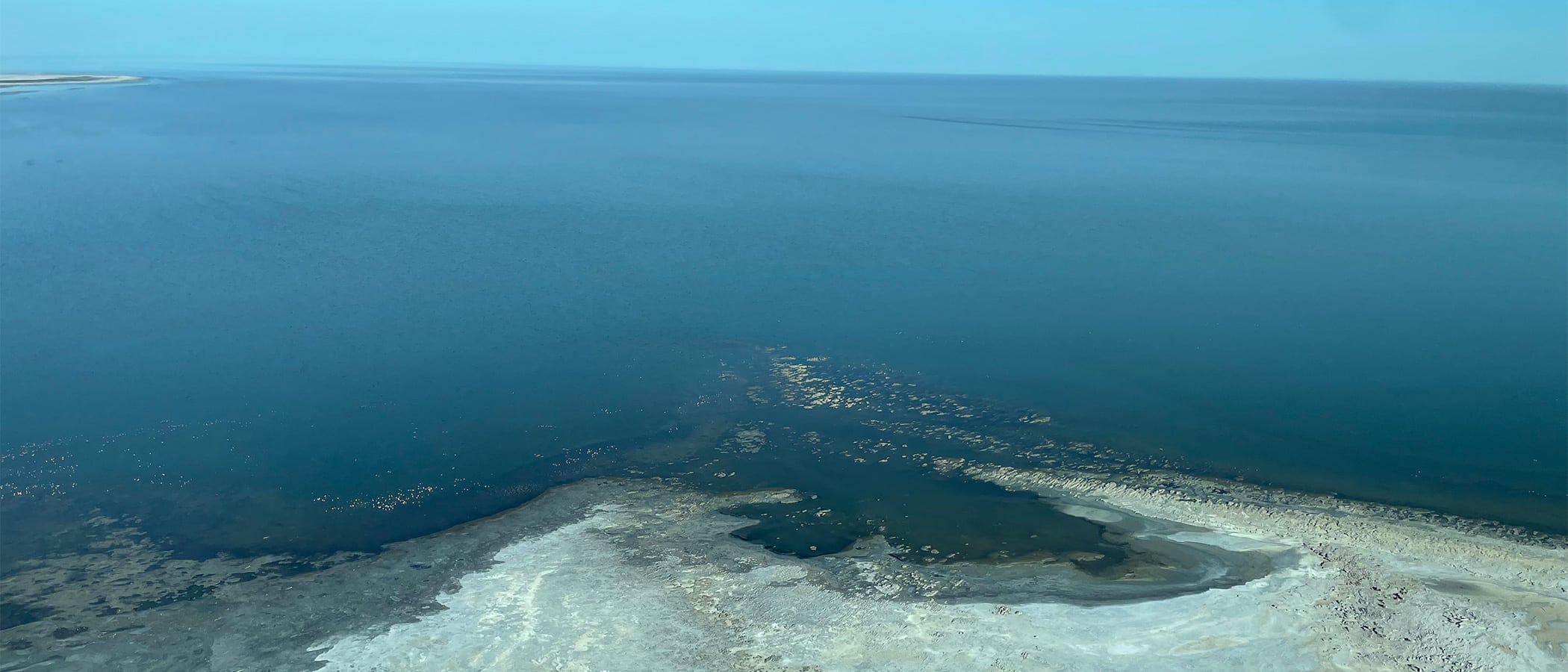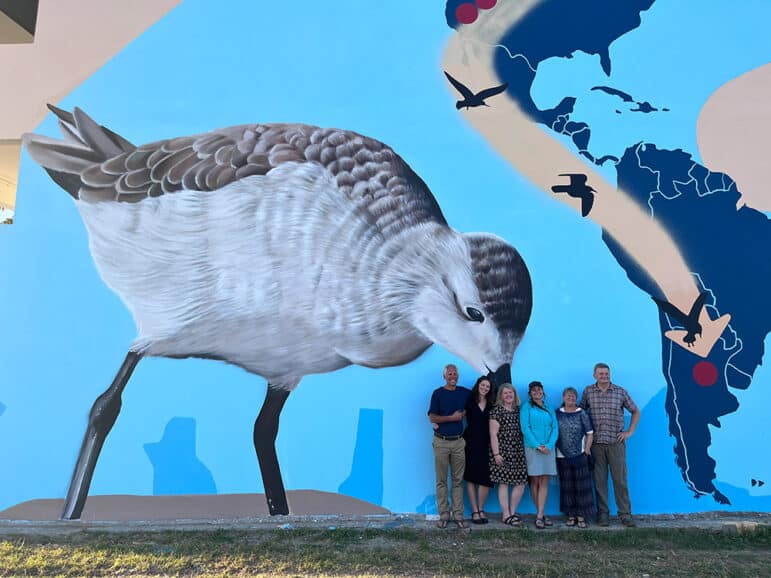
Last fall, a flock of phalarope enthusiasts traveled 3,000 miles from Mono Lake to the Wilson’s Phalarope’s southernmost migration point—Laguna Mar Chiquita. That’s how six Mono Lake Committee staff, one Board member, and several long-time Mono Lake advocates from California State Parks, the Inyo National Forest, and Oikonos Ecosystem Knowledge all found ourselves together bumping down a rural road in Argentina’s Córdoba province heading toward the largest saline lake in the Americas.
We were there to celebrate the new designation of Ansenuza National Park, to share our experience working to protect Mono Lake, a vital sister lake to Laguna Mar Chiquita, and to better coordinate international scientific research efforts with a particular focus on phalaropes.
After more than 24 hours of travel we felt a new appreciation for the fortitude of phalaropes, which weigh the equivalent of two AA batteries and fly the 3,000 miles from Mono Lake to Argentina non-stop. As our bus slowed to enter the town of Miramar, on the shore of Laguna Mar Chiquita, we caught sight of a spectacular, three-story phalarope mural so new the paint was still drying.

During the three-day celebration that followed we shared our experience with habitat conservation and restoration as we learned firsthand about the challenges facing Laguna Mar Chiquita and strengthened connections with our Argentinian counterparts. Alongside workshops and presentations were field trips to see different areas of the lake by horseback, airplane, and kayak.
We got to see Wilson’s Phalaropes in their southern-hemisphere home. Ryan Carle, Science Director at Oikonos Ecosystem Knowledge and lead phalarope researcher, saw “flocks of 40,000” from a small plane. Others got to see them mingling with thousands of Chilean flamingos. One highlight was a trip to the community of the Sanaviron people of Kasik Sacat at Laguna Mar Chiquita’s Dulce River delta. Alongside the creation of Ansenuza National Park, this Indigenous group is beginning to offer ecological and cultural tours of the remote and wildlife-rich areas they have preserved for generations.
Our visit was timed to coincide with an Environmental Leaders Forum for students of Experiencia Ambientalia, an extraordinary environmental education and leadership program in which high school students learn about the importance of conserving Laguna Mar Chiquita. These inspiring students helped us focus on the most critical challenges for the future with their insightful questions while infusing the days with the joy of cross-cultural exchange. Plans for connecting Mono Basin Outdoor Education Center participants with Experiencia Ambientalia students virtually are already in the works, and program leaders in both hemispheres are also planning for an in-person exchange.
The trip marked the 30th anniversary of Mono Lake’s connection with Laguna Mar Chiquita and Great Salt Lake in Utah through the Western Hemisphere Shorebird Reserve Network (WHSRN), which works to protect and connect critical habitats for migratory shorebirds. With all three lakes currently facing unprecedented pressures from excessive tributary diversions and a warming climate, this gathering of people involved in all aspects of ecosystem protection was particularly well-timed.
In fact, many of our Argentinian partners participated in the Mono Lake State Water Board workshop. In addition, the 2023 Mono Basin Chautauqua will highlight international phalarope research and efforts to bring phalarope murals to Mono Lake and Great Salt Lake are underway.
This trip was both a dream come true and an inspiring reminder that Mono Lake and Laguna Mar Chiquita are linked not only by migratory Wilson’s Phalaropes and shared environmental challenges, but also by partnerships of passionate and determined scientists, educators, land managers, and students working for the phalaropes, and so much more.
This trip would not have been possible without US Forest Service International Program support, and the hard work of our counterparts, and esteemed colleagues, at Laguna Mar Chiquita—WHSRN, Manomet, and Fundación Líderes de Ansenuza. Special thanks also go to Oikonos Ecosystem Knowledge, California State Park Rangers Association, and California State Parks. Un agradecimiento especial también a Aves Argentina, Natura Argentina, Asociación Ambiente Sur, Secretaria de Ambiente y Cambia Climático, Gobierno de la Provincia de Cordóba, Administración de Parques Nacionales Argentina, y Parque Nacional Ansenuza.
This post was also published as an article in the Winter & Spring 2023 Mono Lake Newsletter. Top photo courtesy of Thomas Torres.
